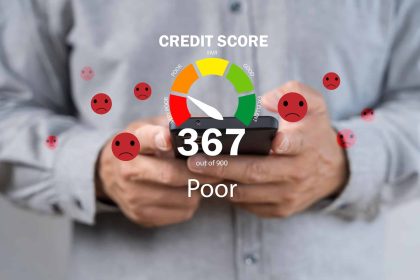If you want to grow your wealth faster than the average person, I suggest trying to think in two timelines that move together in unison.
The first timeline is analyzing what’s going on right now. The second timeline is analyzing what could happen in the future, with a consistent spread. It’s like having a dual computer processor always running in your brain.
I’ve been thinking in two timelines since 1999, when I got my first finance job out of college. Thinking this way was key to me building enough wealth to escape corporate America in 2012. I haven’t stopped thinking this way since.
Example Of Thinking In Two Timelines For Greater Wealth
The classic example to explain my suggestion is to people who are currently working.
- Timeline #1: How do you feel about your job now?
- Timeline #2: How do you think you will feel in ten years if you are still doing your same job today?
Most people I talk to never think about question two when they first start their job. They are thrilled to be there and full of optimism. But I want you to think about question #2 because I’m trying to get you to forecast your misery.
If you can approximate when you’ll be miserable at your job, you can take steps to prepare for when that misery comes. But if you don’t think about question #2 consistently in two timelines, by the time you are miserable, you are screwed. You have little-to-no options for getting out of a suboptimal situation.
Saving And Investing Enough To Break Free From Misery
When I was told I had to get in at 5:30 a.m. and stay past 7 p.m. to ensure I got the appropriate research from my colleagues in Asia for clients, I knew I couldn’t last 40 years in a career like my parents did. Instead, I made a more realistic assessment: how long could I conceivably last before burning out completely? The answer I came up with was age 40.
So I calculated how much I would need by then to have the courage to walk away. That number was $3 million. Depending on how the net worth was structured, it could generate potentially $100,000 a year in passive income. From that moment on, saving and investing $3 million became my mission. I constantly visualized what life would look like at age 40, 41, 42, 43, 44, 45, and beyond—free from the grind with that money in mind.
This two-timeline approach—present-day hustle paired with future-day dreaming—kept me focused and motivated. I truly believed that if I didn’t hit that net worth target, I might short-circuit my life from all the stress and hours. I was already beginning to suffer from plantar fasciitis, uncontrollable allergies, and weight gain.
In the end, I left three months before my 35th birthday thanks to an unexpected variable: the ability to keep all my deferred compensation and receive a six-figure severance package after 11 years at my last firm. That severance covered five years of normal living expenses. With that financial cushion in hand, I knew it was now or never—so I took the leap of faith.
Using Two Timelines To Become A Better Investor
Now let’s apply my two-timeline approach to investing.
1) Present Timeline:
Investors have done incredibly well since 2020, especially those who bet on tech. With the S&P 500 up more than 20% in both 2023 and 2024, the investor class has built far more wealth than expected. Real estate has also performed strongly since 2020, although some markets—like Texas and Florida—are correcting. Every investor should look at what their net worth was in 2020 and celebrate.
2) Future Timeline (10–20 Years Ahead):
If you or your parents don’t invest aggressively, life could stay in hard mode indefinitely. The wealth gap has already widened dramatically since 2020, and it’s likely to keep widening. In 10 to 20 years, buying a primary residence might be next to impossible. Finding a job that pays a livable wage could also become increasingly difficult as AI disrupts more industries.
What should we do?
The Plan To Ensure The Future Will Be OK
I’ve developed a general game plan to give my family a fighting chance to compete in an increasingly competitive and uncertain future.
1) Hold onto our primary residence and at least two rental properties to stay long real estate.
Real estate is one of the most reliable ways to build and preserve wealth over time. By holding onto property, we not only benefit from potential appreciation and rental income, but we also protect ourselves from being priced out of housing in the future. Owning one rental property for each child is something you should consider.
2) Build two 529 plans that equal the current four-year cost of the most expensive university today.
College tuition continues to rise faster than inflation, and there’s no sign of it slowing down. Fully funding 529 plans now ensures our kids will have the freedom to choose quality education without being burdened by debt—or burdening us. They will also have the option to attend the best college that accepts.
3) Invest at least the gift tax limit every year in each child’s custodial investment account and Roth IRAs.
By consistently contributing early, we harness the power of compounding. The goal is to build a financial foundation that allows them to pursue careers they enjoy, not just ones that pay the bills or seemed “high status” by society.
4) Aim to invest at least $100,000 a year in risk assets for the next 20 years for ourselves.
To combat inflation and maintain purchasing power, consistent investing in equities, venture capital, and other growth-oriented assets is critical. This aggressive approach is our hedge against stagnation and the rising cost of living. It won’t be easy as a writer, but I’ll somehow find a way through other activities.
5) Build $500,000 in private AI company exposure to hedge against a difficult job market in the future.
AI is both a threat and an opportunity. By investing in private AI companies or funds, we aim to participate in the upside of technological disruption, rather than simply becoming victims of it.
Why a $500,000 Investment in AI Makes Sense
Ever since 2017, I’ve been grappling with the reality of having to pay for college starting in 2036. Based on current projections, we’re looking at around $450,000 for public and $750,000 for private university tuition over four years. That’s a staggering amount—especially considering most of what’s taught in school today is freely available online.
One solution is to guide them toward attending community college for two years before transferring to an in-state university. Another is to educate them ourselves, or at least as much as we possibly can before they are adults.
But perhaps the most compelling solution is to invest in the very technology that’s likely to disrupt traditional education the most: artificial intelligence.
The Potential Returns On A $500,000 Investment
At first glance, allocating $500,000 to private AI investments may seem excessive. But when you compare that to the potential $450,000–$750,000 cost of college in 2036, it starts to look like a rational hedge.
The logic goes: if I’m willing to spend $450,000 to $750,000 on college in 2036 per kid, then I should absolutely be willing to invest $500,000 or more in the very companies that might make traditional education obsolete. Heck, I should be willing to invest $900,000 – $1.5 million in private AI companies now that I really think about it.
Here’s a breakdown of how a $500,000 investment grows over 10 and 20 years at different compound annual growth rates (CAGR):
| Annual Return | 10 Years | 20 Years |
|---|
A $500,000 investment compounding at 15% annually over 20 years grows to about $8.2 million. Can you imagine having the option to access that kind of capital in your mid-20s? While 15% is an aggressive target, these types of returns are far more plausible when investing in earlier-stage private companies.
Just look at the performance of early investors in OpenAI, Anduril, Scale AI, Databricks, and Anthropic—many have achieved well over 50% annual returns since their Series A rounds.
As a private equity investor since 2006, I’ve had a number of multi-baggers across various funds. The real challenge, however, is having a large enough position in these winners to materially move the needle. The other challenge is not investing in too many bagels (100% losers) that drag down the overall performance. Not easy.
Think in Two Timelines to Live Without Regret
The present is fleeting, and the future is always approaching. To live richly, we must learn to hold both timelines in mind: who we are now and who we hope to become.
It’s not enough to simply dream of a better future—we must consistently act in alignment with that vision. Otherwise, we risk drifting through life, only to one day wonder where all the time went.
We will all grow old. And when that moment of reflection comes—when the noise quiets and the days are nearly spent—I hope we don’t look back with regret. Not for the risks we took or the failures we faced, but for the plans we never made and the steps we were too afraid to take.
Live today with tomorrow in mind. That’s how we give meaning to both.
Suggestions
If you’re looking to invest in private AI companies, check out Fundrise’s venture capital product. The minimum investment is $10 and you can view what Fundrise is holding first before making an investment decision. I’ve personally invested $153,000 so far and I will continue to dollar cost average in to build my AI position to $500,000.
To expedite your journey to financial freedom, join over 60,000 others and subscribe to the free Financial Samurai newsletter. If you want to get my posts via e-mail as soon as they come out, sign up here. Financial Samurai is among the largest independently-owned personal finance websites, established in 2009. Everything is written based on firsthand experience and expertise.
Read the full article here





